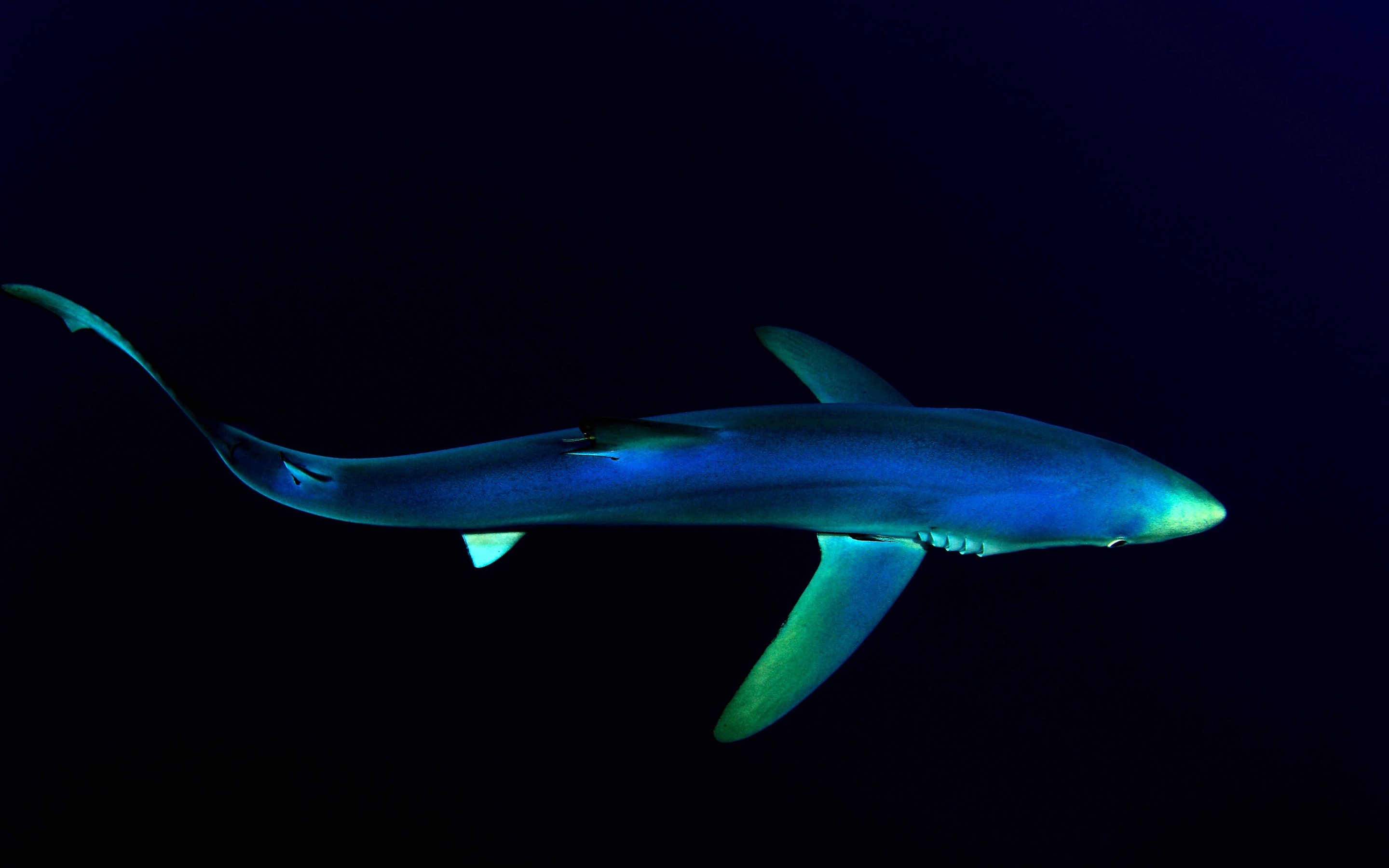
Where the major threat is fishing for human uses. The IUCN – International Union for the Conservation of Nature listed Prionace glauca (Blue shark) as “Near Threatened (NT)”. Certainly, your guess is right, the attacks occurred as a result of human interference mostly in an attempt to capture the shark. There are only a few records of this shark species attacking humans where some are very fatal. On the side of the shark, Blue sharks generally do not act aggressively toward humans. Even more, the jaw and teeth of this shark species are sometimes collected as well for commercial uses.Īll these results in the massive killing of Blue sharks by humans with an estimated number of about 10 – 20 million Blue sharks killed each year. Also, the fins come handy for making shark-fin soup.

#Deep blue shark under boat skin#
The skin of the Blue shark is a raw material for making leather. After all, there is a report of the Blue shark’s flesh containing a high concentration of heavy metals which includes lead and mercury. Although, this shark is not widely sought for the meat. Hence, people eat it fresh, smoked, dried, and in salted form converted to fishmeal. Of course, the skin of Blue sharks is edible.

As such, they hunt this shark for various purposes including commercial and game uses. Thus, humans pose the known natural enemy of Blue sharks.

With the abundance of this shark species, its natural existence is under threat resulting from human activities. And, because they swim very fast, they can cover longer distances in a shorter amount of time.Īnother Blue shark fact here is that they habit off the coast of every continent except for Antarctica. As a result, they will swim across far distances in search of food or mating partners with no intention of returning. One amazing Blue shark’s fact you should know about their habitat is that they have no set area they habitually return to. And, they migrate in a clockwise direction, tending to follow ocean currents while they seek cooler water. Their distribution goes as far north as Norway and as far south as Chile. Such migration as moving from New England to South America. However, in temperate regions, the Blue shark may at times swim offshore in very rare settings where people in a boat may observe it. They can go as deep as 350 meters below the surface of the water. This shark species will swim deeper when in tropical waters. They inhabit deeper waters seeking comfortable water temperatures ranging from 45 to 77F (7 to 25 C). As such, this species of shark is epipelagic. Habitat and Distribution Rangeīlue sharks prefer to live in deep cooler temperate and tropical ocean waters around the world. Meanwhile, An average male Blue shark on maturity will weigh just between the range of 60 and 121lb (27 and 55 kg). And, the large ones growing over 10 feet (3 meters) in length will weigh over 450lb (204 kg). As such, an average female Blue shark will weigh between 205 and 401lb (93 and 182 kg).

The females tend to grow larger than the male Blue sharks. But, there is no scientific backup for this claim. However, there are occasional reports of this shark growing to an unusually large size with a claim widely spread of a length of 20 feet (6.1 meters). Consequently, this shark can effortlessly pursue its prey to a longer distance.Ĭommonly, Blue sharks will grow to a length of about 12 feet (3.8 meters). The Blue sharks have tail fin which moves side to side as it swims, thus making it a very fast and energetic swimmer. This makes the set of teeth very distinctive when compared to other sharks. They tend to overlap each other in the jaw. The teeth in the upper part of the shark’s mouth have a triangular shape, serrated and recurved. Therefore, the skin of this fish is smooth when touched. More so, this shark has small and overlapping dermal denticles (scales). The main reason behind this design is to aid the shark’s agility and ease movements while swimming. This species of ocean shark has a specially designed body with a tapered, sleek body. Though, the underside of this shark is white in color. The Blue shark got its common name from one of its identifying features which is the deep blue color at the top side of its body and the lighter shades by the sides.


 0 kommentar(er)
0 kommentar(er)
